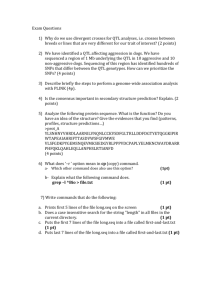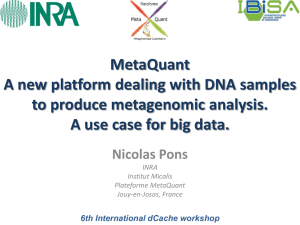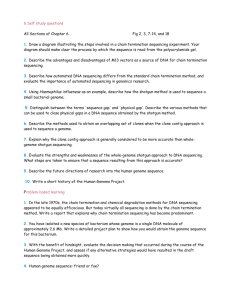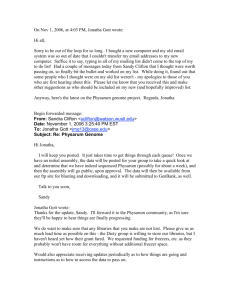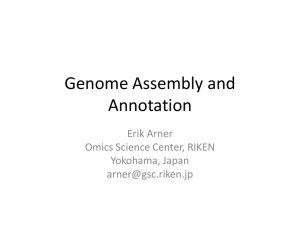Draft Assembly of the Sunflower Genome
advertisement
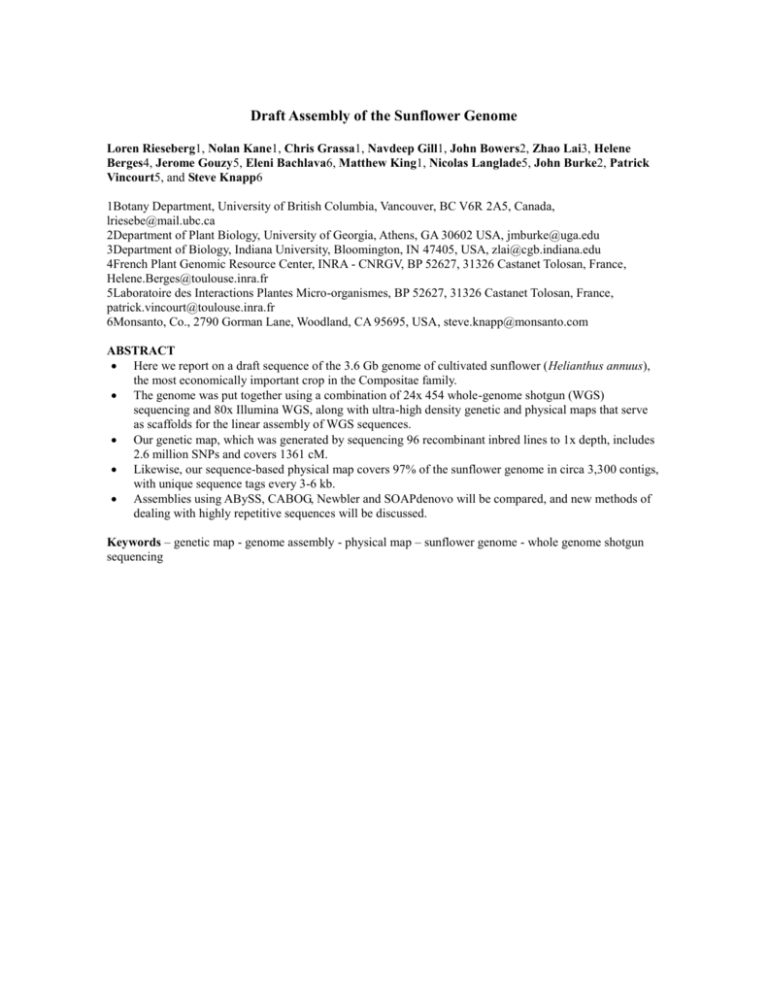
Draft Assembly of the Sunflower Genome Loren Rieseberg1, Nolan Kane1, Chris Grassa1, Navdeep Gill1, John Bowers2, Zhao Lai3, Helene Berges4, Jerome Gouzy5, Eleni Bachlava6, Matthew King1, Nicolas Langlade5, John Burke2, Patrick Vincourt5, and Steve Knapp6 1Botany Department, University of British Columbia, Vancouver, BC V6R 2A5, Canada, lriesebe@mail.ubc.ca 2Department of Plant Biology, University of Georgia, Athens, GA 30602 USA, jmburke@uga.edu 3Department of Biology, Indiana University, Bloomington, IN 47405, USA, zlai@cgb.indiana.edu 4French Plant Genomic Resource Center, INRA - CNRGV, BP 52627, 31326 Castanet Tolosan, France, Helene.Berges@toulouse.inra.fr 5Laboratoire des Interactions Plantes Micro-organismes, BP 52627, 31326 Castanet Tolosan, France, patrick.vincourt@toulouse.inra.fr 6Monsanto, Co., 2790 Gorman Lane, Woodland, CA 95695, USA, steve.knapp@monsanto.com ABSTRACT Here we report on a draft sequence of the 3.6 Gb genome of cultivated sunflower (Helianthus annuus), the most economically important crop in the Compositae family. The genome was put together using a combination of 24x 454 whole-genome shotgun (WGS) sequencing and 80x Illumina WGS, along with ultra-high density genetic and physical maps that serve as scaffolds for the linear assembly of WGS sequences. Our genetic map, which was generated by sequencing 96 recombinant inbred lines to 1x depth, includes 2.6 million SNPs and covers 1361 cM. Likewise, our sequence-based physical map covers 97% of the sunflower genome in circa 3,300 contigs, with unique sequence tags every 3-6 kb. Assemblies using ABySS, CABOG, Newbler and SOAPdenovo will be compared, and new methods of dealing with highly repetitive sequences will be discussed. Keywords – genetic map - genome assembly - physical map – sunflower genome - whole genome shotgun sequencing





